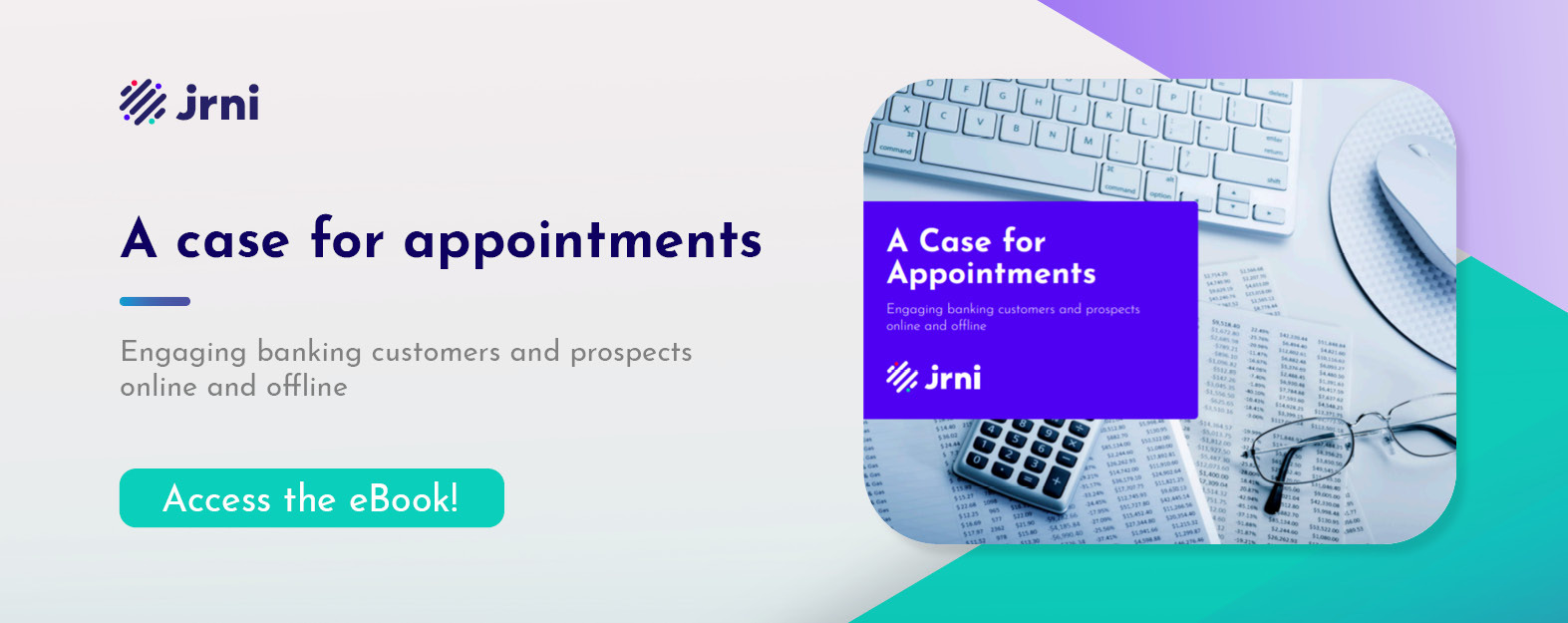Nearly half (43%) of financial institution customers have expressed their desire to change the way they bank due to the pandemic – and this largely consists of having digital options. Even before the pandemic, banks had been moving customers out of their branches and onto a digital banking platform. This was led by both economic reasons and efficiency drives, in conjunction with the realization that a new generation of digitally-connected customers are demanding not only convenience, but also an engaging customer experience.
According to research from Juniper, the total number of online and mobile banking users will exceed 3.6 billion by 2024, and online and mobile banking growth is expected to increase by 54% compared to 2020. In this new digital world, banks need to find different ways of connecting with customers to meet their needs while also driving growth for the institutions – without necessarily conducting business in-person.
Yet simply providing digital alternatives to physical banking, such as apps and chatbots, is not enough. Research by Forrester determined that only one-third of American customers trust chatbots to handle simple financial transactions, and two-thirds don’t trust them to handle complex transactions. Furthermore, almost 80% of people polled want to speak with an agent as opposed to a chatbot according to a survey by conversational AI provider Uniphore.
Digital requires the human touch
For banks to succeed in this new normal, digital interactions must have a level of compassion that equals or exceeds what is available in branches. Banks need to consider the emotional impact of their digital banking services and how they engage with customers. Consumers require more today than just speed and ease of access. They want to feel good about their interactions with technology, and this requires an element of human connection. Ultimately, humans trust other humans more than they trust technology designed to simulate humans. As such, providing “humanized engagement” through an omnichannel approach will be key throughout 2021 and in the future.
The challenge now for the banking sector is getting this balance between digital innovation and human engagement right across all channels.
Seamless, omnichannel integration is needed
As stated, consumers are seeking convenience, speed, and a compassionate customer experience when it comes to their banking. They want to conduct a transaction and get assistance in a way that is most expedient for them, while receiving individualized attention, instead of having a rushed lunchtime appointment at their local branch. For this to happen, the digital experience must be fully and seamlessly integrated with the physical one.
An example would be the ability to book an appointment on an app or through the website at any time of the day and be able to have access to a preferred banker, wealth manager, private banker, or qualified professional. This can be taken even further with the capability to add the appointment to personal calendars, selecting from different locations, choosing different skill types or making the appointment in different modes, such as in-person, via video, or via telephone.
Personalizing the experience is key
Banks can demonstrate that they care about consumers’ long-term financial happiness by customizing interactions to each individual’s needs. Consumers want personalized digital services and in-person services, and advice based on real-time changes in their personal life. Banks can deliver meaningful and powerful personalized experiences by using their existing data and everyday customer touchpoints. These metrics allow banks to provide services that adapt to new consumer behaviors, embedding personalized, end-to-end experiences for customers in their digital journeys.
When handled right, using customer data to provide an improved experience increases levels of customer satisfaction. With personalized service, consumers feel valued and that the banks are taking care of them. In fact, customer experience is overtaking price and product as the key brand differentiator for financial institutions. According to McKinsey, one bank saw an increase of 30% in sales when there was an appropriate and timely (24-48 hours) human response compared to a purely digital journey.
Banks can drive business growth
In addition to increasing customer satisfaction, humanized engagement also drives profitability. In the US, one top 10 bank had 167,000 appointments scheduled in January 2021 by offering customers three appointment options: “In person”, “by phone”, and “virtual.” This represented a 1,800% increase from the previous year – because customers could now access the right person at a time that was convenient for them via the channel they preferred. The bank also saw the cancellation rate for appointments reduce from 23% to 7%.
Flexible appointment choices from virtual technologies also enable banks to reach a broader customer base and, through collecting data and personalizing offerings, build a closer relationship with different socio-economic groups. This opens up significant new markets and audiences for banks with consumers who would not traditionally have been customers. Being able to connect through different appointment options has been a huge innovation for the mortgage market. A mortgage advisor can now share documents online, and customers can sign those documents while on a video call. This makes the process more efficient and flexible, and has had a massive effect on uptake.
Humanizing digital is essential for banks now – and in the post-COVID-19 world. To augment growth, banks must integrate the digital and human channels to create a seamless omnichannel offering. If banks provide a personal touch in their digital interactions, they will build stronger connections with their clients, which in turn leads to greater customer acquisition and better customer retention. Those financial institutions that rise to the challenge most rapidly and deliver true humanized engagement will have a significant advantage over their competitors.
One way financial institutions are humanizing their customer engagements is with appointment scheduling! Appointments enable banks to maintain relationships with customers however, whenever, and wherever they prefer to engage. Want to learn more? Then be sure to check out our eBook "A case for appointments"!




